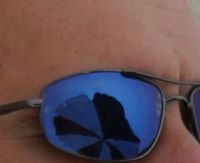What is verdigris?
Verdigris is the common name for a green pigment obtained through the application of acetic acid to copper plates or the natural patina formed when copper, brass or bronze is weathered and exposed to air or seawater over time.
The name verdigris comes from the Middle English 'vertegrez', an alteration of 'vert-de-Grèce' ("green of Greece"). It was used as a pigment in paintings and other art objects, mostly imported from Greece.
It was originally made by hanging copper plates over hot vinegar in a sealed pot until a green crust formed on the copper. Another way of obtaining verdigris pigment, used in the Middle Ages, was to attach copper strips to a wooden block with acetic acid, then bury the sealed block in dung.
A few weeks later the pot was dug up and the verdigris scraped off. In eighteenth-century France, it was manufactured in household cellars, "where copper plates were stacked in clay pots filled with distilled wine."
The verdigris was scraped off weekly. The chemical reaction exhibited between wine and copper to produce verdigris may be related to wine's own oxidation process.
Another method had to do with reacting copper sulfate solution with solutions of lead, barium, or calcium acetate. Their sulfates are insoluble, forming precipitates and leaving the copper acetate in solution. Natural or artificially created coatings of verdigris are commonly used as a patina to protect copper or bronze objects, especially in architecture.
More Info:
en.wikipedia.org






